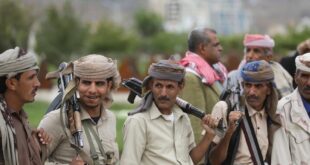Where is Islamic State leader Abu Bakr al-Baghdadi?
It’s a question I asked a year ago, and unfortunately we still don’t know the answer for sure. But based on ISIS tradecraft and significant U.S., Syrian rebel, and Iraqi efforts to capture Baghdadi, he is almost certainly playing a very limited role in directing ISIS operations. Were the ISIS leader issuing regular orders, he would leave a trail by which the U.S. and its partners could identify him.
Where would Baghdadi choose to hide?
Well, that’s a far harder question. Again, however, considering where and how ISIS leaders have hidden in the past, I would venture that Baghdadi is staying in one safe house or alternating between a few safe houses in the Anbar province.
Baghdadi’s model for hiding is likely that of Osama bin Laden’s in Abbottabad, Pakistan. There, bin Laden was able to live a relatively comfortable life under a presumption of safety. He was only caught when the CIA managed to identify his most reliable interlocutor and track him to the residence. Yet by staying out of sight in one location, bin Laden was able to mitigate the risk of his detection at a road block or at the ears and eyes of a nosy neighbor.
Iraqi safe houses are almost certainly preferable for ISIS than those in Syria. In the latter case, the loss of ISIS territory means that ISIS strongholds from Raqqah to the eastern border with Iraq are now saturated with pro-U.S. Kurdish and Arab forces. That makes it hard for ISIS fighters to blend into communities that hate them.
And that leaves us with the large, sprawling urban environments of Anbar, Iraq. These cities such as Ramadi and Fallujah are also home to lower ranking ISIS fighters who are lower down the radar of U.S. and allied intelligence services. But these Anbari cities also benefit from their location along arterial highways that are well known by ISIS network facilitators. In turn, they also offer the opportunity to relocate amid a security operation targeting one city. That’s how al Qaeda in Iraq leader Abu Musab al-Zarqawi was able to evade detection during the 2003-2006 period.
Cities also allow Baghdadi’s personnel to use cell phones in an environment where doing so does not stand out, in contrast to the open desert. In turn, I suspect Baghdadi is holed up with a lot of dollars and one or two trusted bodyguards somewhere in the area below.
But wherever Baghdadi is, we can confidently assess three things. First, that Baghdadi will keep releasing audio tapes inspiring his fighters to new action. Second, that ISIS will continue threatening regional and Western security. Third, that skilled U.S. and allied intelligence services mean he will eventually be caught.
 Eurasia Press & News
Eurasia Press & News
